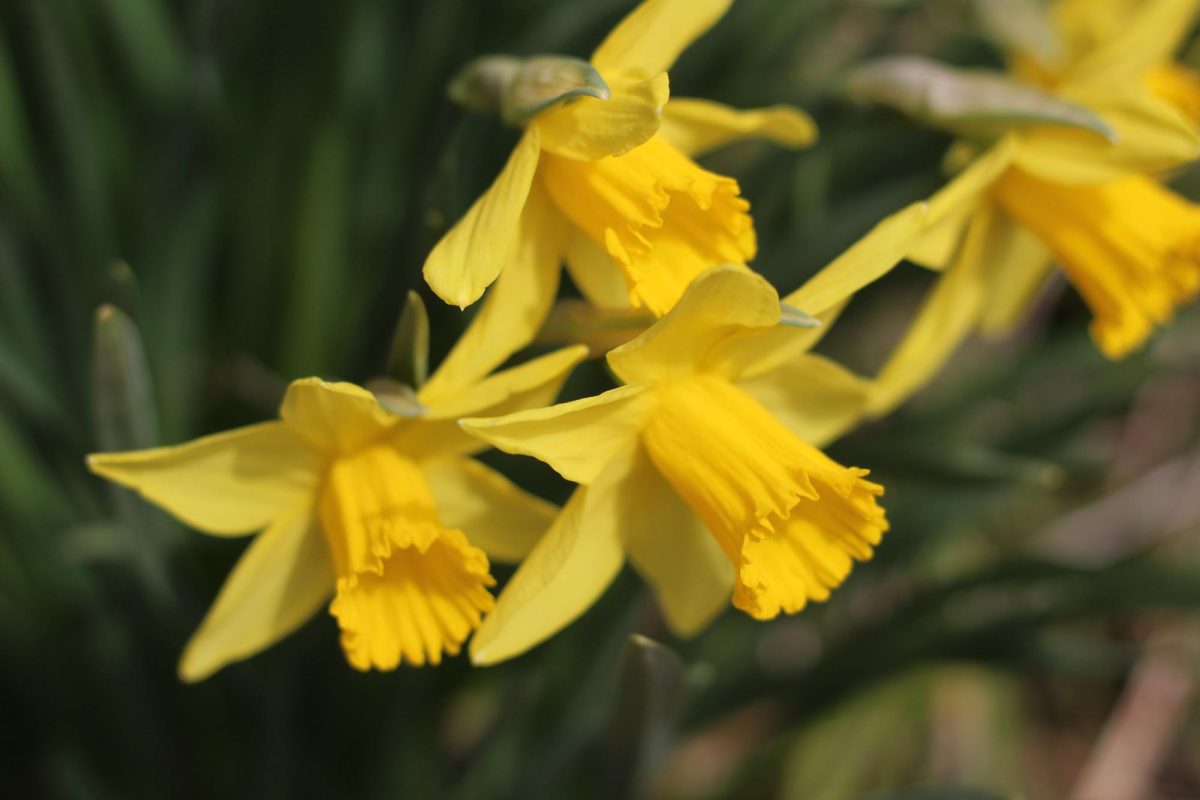Like most abstract art, James Welling’s exhibit titled “Open Space” is more than meets the eye.
Named after a plot of empty land behind his teenage home that was kept vacant by a town order, the collection of photography, video and watercolor, housed at the University of Massachusetts’ Fine Arts Center until May 5, depicts the artistic journey of the Hartford, Conn., native from 1970 to 2010.

Welling spoke at the opening reception for his showcase on Jan. 30 to a crowd of 100 in an informal discussion with Hampshire College professor Lorne Falk, calling himself an amateur while introducing his art because he is not bound by professional codes.
Without a signature style or artistic commitment, Welling found his muse moving from Carnegie Mellon to the California Institute of the Arts and by following his friend’s suggestion to take photographs.
“I got a camera like Ansel Adams and began to apprentice myself to the camera,” Welling said. “I was lucky that I chose this device because as I worked with it, I’ve been able to unpack it in ways that I couldn’t have imagined when I started. But it’s very important that I began with this medium called photography.”
Welling, frustrated because he thought his pictures always looked like someone else’s work, said re-creating the medium of photography was the turning point that allowed his works to become a personal expression.
Welling’s mission in creating new art is to make a puzzle or something to decode.
“I seem to be incapable of just wanting to make a transparent picture,” Welling said. “I like trying to make a photograph that has more of my background in it so that it’s not just a transparent window. It has to do with what I’m thinking about, my interests, certain aspects of the camera — just trying to make it complicated or dense.”
Aaron Stewart, a graduate student in UMass’ music department, admits to being a novice in art critique, but finds Welling’s work to be thought provoking.
“One thing I noticed that I think is unique with this artist is that, at least with some of his new photography, there’s a glossy cellophane sheen on everything,” Stewart said. “It’s almost like that’s how he sees things, with this very light plastic coating. I don’t know how I feel about it, but you can see that on a lot of his photographs.”
Stewart also called the works impressionistic because of their focus on texture and landscapes.
Fine Arts Center education curator Eva Fierst said landscapes are so prominent in Welling’s art because of his ties to New England.
“He has a very strong connection to New England,” Fierst said. “He always comes back with his work and sometimes in his travels, to Connecticut, in order to refresh, rejuvenate and get his ideas back. Some artists do that; they go back to their origins.”
Shawn Durrett, whose sister Justine represents Welling at a New York art gallery, feels a strong connection to the showcase as a New England native.
“Being from New England myself, this particular landscape seemed very familiar and very significant,” Durrett said. “His work is very inviting to me as a viewer and I think there’s a real reverence for place.”
After hearing Welling speak on his own work, Durrett said his insight made the exhibit more interesting and enjoyable.
“I think that was really cool to hear what he had to say about his own interests and vision,” Durrett said. “Hearing the artist talk about the context of his own work, what he’s trying to explore and the dialogues that he’s having with himself as an artist made prints even more interesting to me because I wouldn’t have necessarily seen them as abstract at first glance.”
With visual tools like Instagram and Facebook, Fierst said works of Welling are easily taken for granted if consideration for when they were created is not given.
“It’s unbelievable strides in technology, but not necessarily unbelievable strides in creativity,” Fierst said. “It’s very similar when you look at the Polaroid images of Andy Warhol. We are so used to snapping and putting on Facebook, we are looking at them in a blasé way.”
Stewart also noted the effect of Instagram on the consciousness of modern art-goers who see similarities between new technology and old 8mm film.
“Part of style in our culture is revisiting the past and reinventing it,” Stewart said. “I think it’s interesting to note the cycle of how style reinvents the past.”
Peter Cappiello can be reached at [email protected] and followed on Twitter @MDC_Cappiello.


















